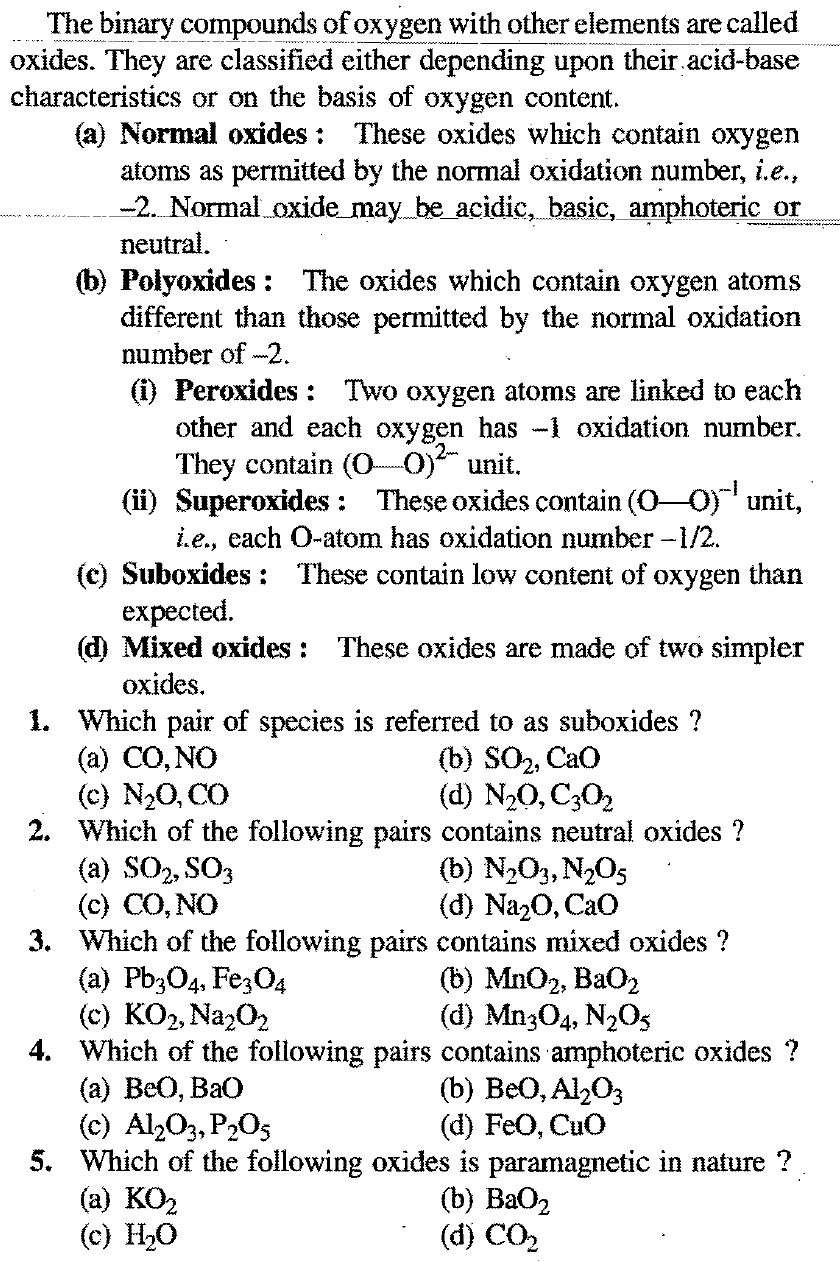Group 16 - 2
Answers (1)
1: (d) - N₂O, C₃O₂
N₂O (nitrous oxide) and C₃O₂ (carbon suboxide) contain a lower proportion of oxygen compared to their higher oxides, making them suboxides.
2: (c) - CO, NO
CO (carbon monoxide) and NO (nitric oxide) are the most likely neutral oxides among the choices. SO2 (sulfur dioxide) and SO3 (sulfur trioxide) are acidic, while the others (Na2O, CaO, N2O3, N2O5) exhibit basic or acidic-basic character.
3: (a) - Pb3O4, Fe3O4
Pb3O4 (lead(II, IV) oxide) and Fe3O4 (iron(II, III) oxide) contain two different metal cations bonded to oxygen, classifying them as mixed oxides. The other options have only one metal cation.
4: (b) - BeO, Al2O3
BeO (beryllium oxide) and Al2O3 (aluminum oxide) can react with both acids and bases, making them amphoteric oxides. BeO and BaO (barium oxide) are basic, while the other combinations (Al2O3-P2O5, FeO-CuO) involve just basic oxides.
5: (a) - KO2
KO2 (potassium peroxide) is a likely candidate for a paramagnetic oxide due to the presence of unpaired electrons. While BaO2 (barium peroxide) might also be paramagnetic, KO2 is a stronger contender based on typical electronic configurations. H₂O (water) and CO₂ (carbon dioxide) don't have unpaired electrons.


